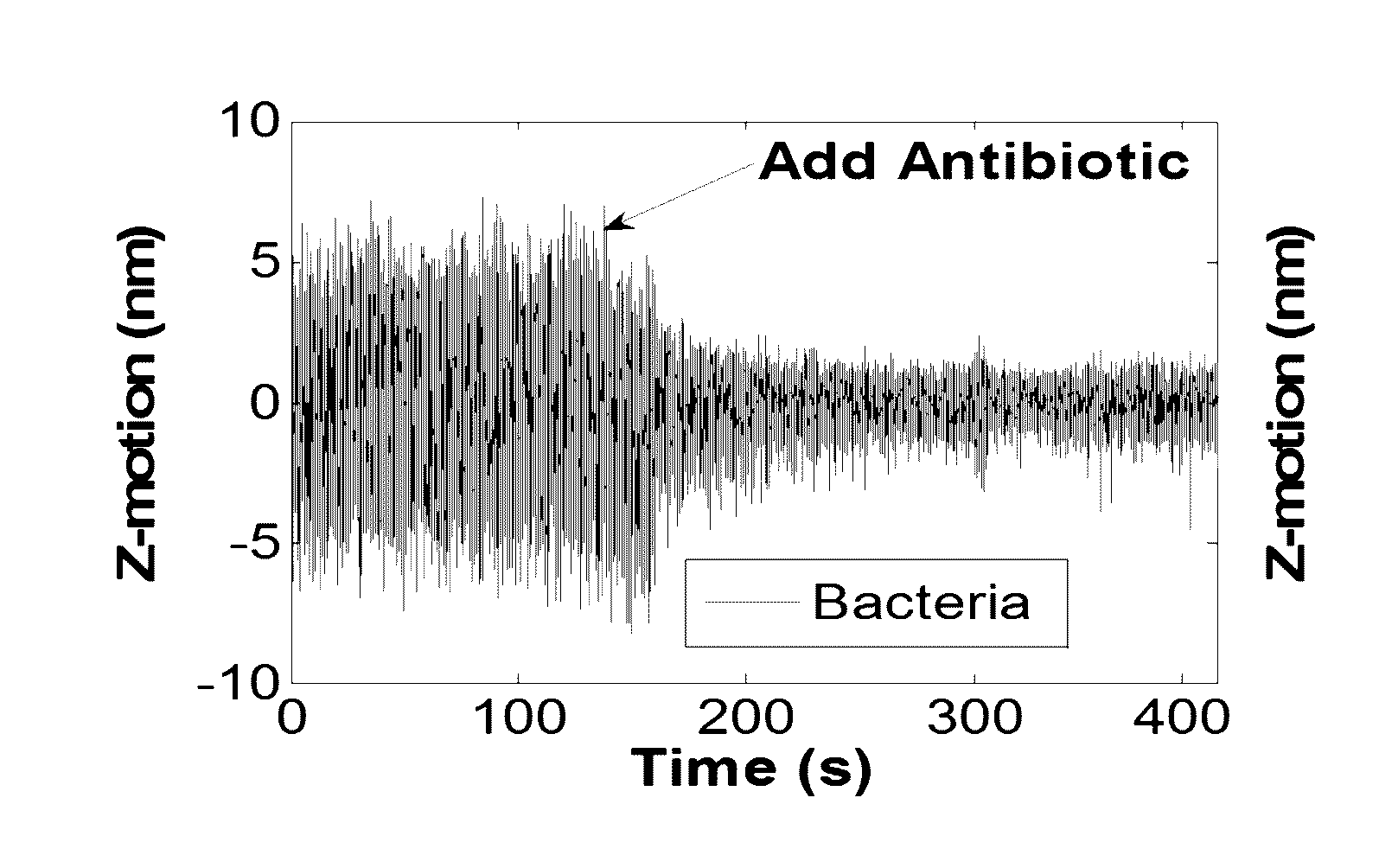Antibiotic susceptibility testing via plasmonic imaging and tracking
a technology of plasmonic imaging and tracking, applied in the field of plasmonic imaging, can solve the problems of threatening human survival, wasting human resources, and wasting human resources, and reducing the accuracy of plasmonic imaging results
- Summary
- Abstract
- Description
- Claims
- Application Information
AI Technical Summary
Benefits of technology
Problems solved by technology
Method used
Image
Examples
example embodiments
[0068]Tracking Mitochondrion Movement with PIT
[0069]Referring now to FIG. 2G, a typical trace of mitochondrion movement in time-lapse plasmonic images is graphically illustrated. A representative trace 200 of mitochondrion movement is tracked using PIT. X and Y translation within 5 nm can be resolved on the horizontal axes, and Z movement is reflected by the image intensity (expressed in a.u.) along the vertical axis. For 3D motion tracking with PIT, a PIT setup on an inverted optical microscope enabling simultaneous capture of plasmonic and impedance images along with additional transmitted, fluorescence TIRF images for validation and additional experiments.15-18 Using this setup, organelles moving inside a cell with 5 nm spatial resolution and <1 millisecond temporal resolution have been tracked successfully. By fitting the spatial distribution of the plasmonic image intensity with a Gaussian function, a moving organelle in both X and Y directions can be resolved, noting that the ...
example 1
[0070]Referring now concurrently to FIG. 3A-FIG. 3B, Z-motion changes after adding antibiotics are graphically illustrated. In these plots, the vertical axis represents Z-motion in nanometers (nm) and the horizontal axis represents time in seconds (s).
[0071]Referring now specifically to FIG. 3A, Z-motion of a bacterial cell before and after adding polymyxin B at t=120 s is shown. The large drop in Z-motion associated with the adding of polymyxin B, confirms the feasibility of the invention.
[0072]Referring now specifically to FIG. 3B, Z-motion of a background control region, which shows no Z-motion changes after addition of the antibiotic is shown. Z-direction movement tracking is based on the exponential dependence of the plasmonic intensity of an object on its Z movement.19 Using the procedures and systems disclosed herein, the tracking accuracy in z direction can reach as high as 0.1 nm.19 To demonstrate this PIT capability for studying bacteria movement, the movement of a living ...
PUM
 Login to View More
Login to View More Abstract
Description
Claims
Application Information
 Login to View More
Login to View More - R&D
- Intellectual Property
- Life Sciences
- Materials
- Tech Scout
- Unparalleled Data Quality
- Higher Quality Content
- 60% Fewer Hallucinations
Browse by: Latest US Patents, China's latest patents, Technical Efficacy Thesaurus, Application Domain, Technology Topic, Popular Technical Reports.
© 2025 PatSnap. All rights reserved.Legal|Privacy policy|Modern Slavery Act Transparency Statement|Sitemap|About US| Contact US: help@patsnap.com



